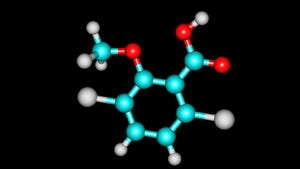
All the rain this year is certainly taking its toll on much of the wheat crop across North Carolina, while the crop in the Piedmont has been mostly spared from weather damage and looks good.
That’s the message Dr. Christina Cowger, a researcher with USDA’s Agricultural Research Service and professor in the Department of Entomology & Plant Pathology at North Carolina State University, delivered at the Piedmont Small Grains Field Day at the Piedmont Research Station in Salisbury April 17.
She said wheat producers across the state still need to be on the lookout for disease pressure as the crop flowers and heads.
“We’re seeing quite a lot of damage because of the rain,” Cowger said. “Soils are waterlogged with low pH. They are acidified, with pH levels below 5 at 4.5 to 4.9. In those fields, wheat seems to be going backward. You have nice healthy-looking plants next to extremely stunted plants. Upon examination, we are finding rotted roots and crowns.”
Due to excess rain, Cowger said Pythium, a fungus-like organism in the soil, is taking advantage of the stress on the crop. Due to low pH and perhaps mineral toxicity, many wheat plants are having trouble taking up nutrients.
“When the pH is that low wheat has trouble getting enough calcium, magnesium and other micronutrients. Also, even soils with a satisfactory pH of 5.0 to 6.5 tend to be leached of their nitrogen so the plants are nitrogen-starved along with everything else. When there is so much water in the soil over weeks and weeks there is little oxygen. This stresses the roots, and they can’t recover well. They don’t develop and the Pythium nibbles off all of those fine root hairs so the plant can’t take up the nutrients it needs,” she said
Cowger said problems from excessive rain are primarily being seen in the eastern part of North Carolina, particularly in the Tidewater region and the Coastal Plain.
Wheat in the Piedmont on the other hand has been spared rain damage, likely due to generally better drainage, and the crop looks good at this point.
Hessian fly is causing some trouble in eastern North Carolina, particularly in Lenoir County. Aphids are also a problem in the Tidewater region.
“Barley yellow dwarf is the problem with aphids. Aphids transmit the barley yellow dwarf. Heavy aphid feeding can also just sap the plant by sucking the life from it, but usually what we’re concerned about with aphids is barley yellow dwarf that causes stunted and yellow or purple patches,” Cowger said.
In the meantime, Cowger said now is the time for farmers across North Carolina to be on the lookout for Fusarium head blight or scab. She urges farmers to continue to monitor the weather and use the online Fusarium head blight prediction tool to monitor their scab risk and determine if they need to apply fungicides.
“Scab infects wheat at flowering. It does not infect before the wheat flowers. You shouldn’t spray for scab until your wheat begins to flower. The way we know if fusarium head blight is at high enough risk to justify fungicide applications is by monitoring the weather. And we do that through the head scab forecasting site,” Cowger said.
Monitoring for scab is a must for North Carolina wheat farmers in April and May. They can sign up to receive email or text notifications when scab risk is high in their region of the state on the Fusarium head blight prediction tool website.
“What causes an increased risk of scab is high humidity for the 14 days leading up to wheat flowering, and that’s how the model calculates your risk of head scab. We recommend spraying a fungicide that is specific for scab if your risk is medium or high, not if it’s low,” Cowger said.
About the Author(s)
You May Also Like






